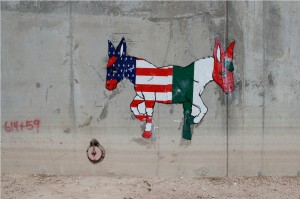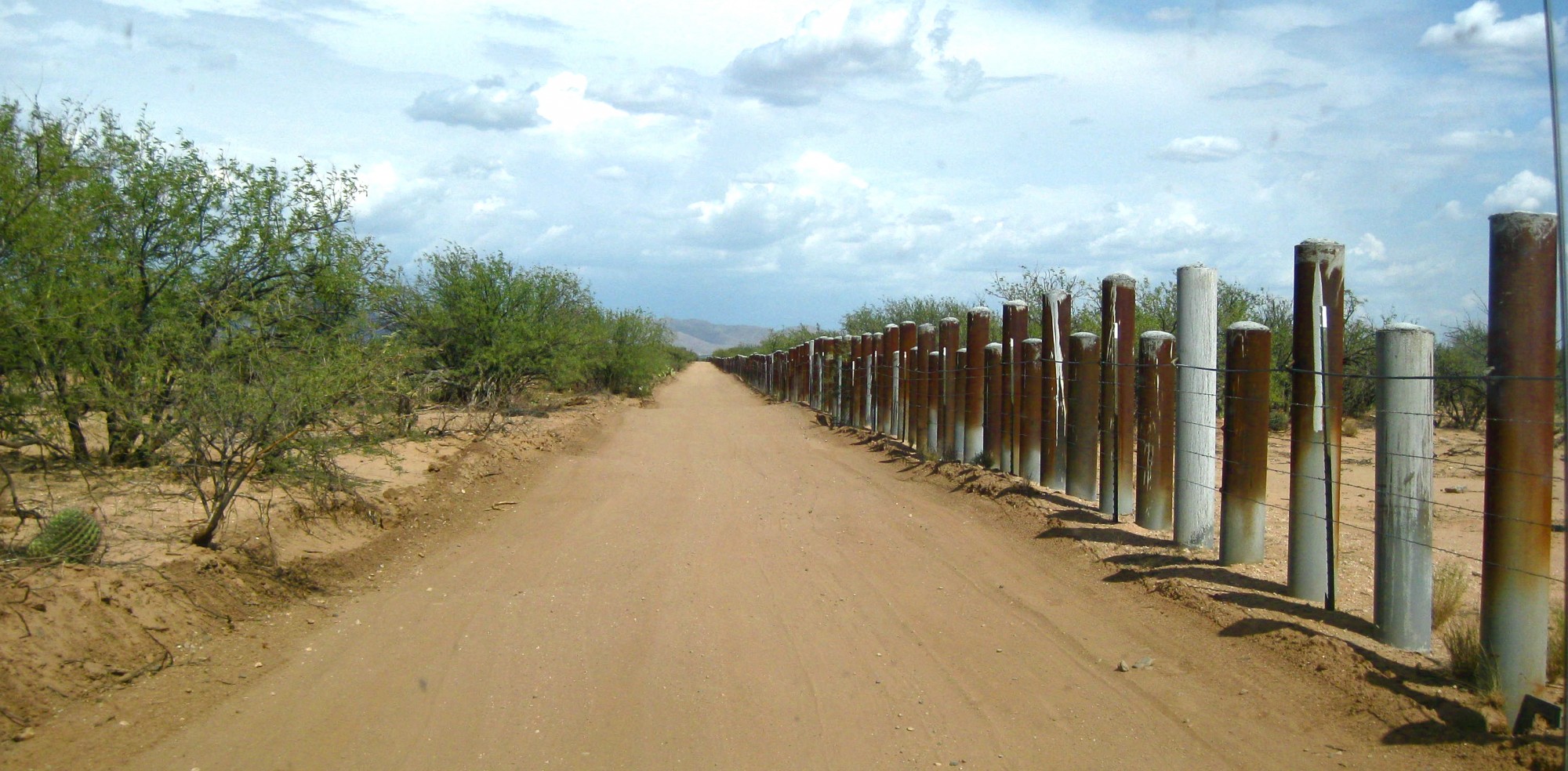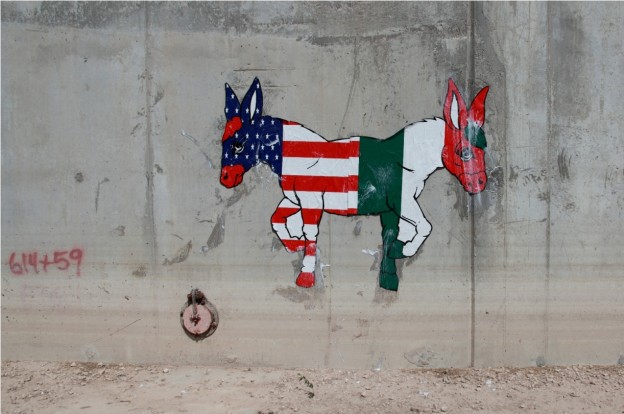Over the past decade, thousands of individuals have migrated from Mexico to the farmlands of Vermont in search of work. Because migrant workers are now an integral part of the state of Vermont, the state can be considered a part of the U.S.-Mexico borderlands. As students of Middlebury College enrolled in a course about the border between the United States and Mexico, we were concerned with the lack of resources available to Vermont migrant workers and their employers. This website has been designed to educate such individuals about relevant legislation, migration history, and available resources.
Although Vermont is subject to several federal immigration laws, it has also developed a unique set of statewide policies. For example, while Missouri’s General Assembly passed a bill in 2008 that would require law officers to check the legal status of people they arrest, require the driver’s license test to be given in English, and withhold grants from cities know as “sanctuaries” for illegal immigrants, Vermont law requires bias-free policing policies and is likely to pass a law that would facilitate the process through which undocumented residents can obtain a driver’s license. Similarly, Vermont immigration law is distinct from the immigration law of states that are physically on the U.S.-Mexico border.
Arizona is home to some of the most well known and controversial immigration laws in the country. In early 2010, there was much debate over Arizona Senate Bill 1070, the “Support Our Law Enforcement and Safe Neighborhood Act,” and Arizona House Bill 2162. SB 1070 declared it a misdemeanor for an alien to be in the state of Arizona without the required doc

umentation. The law also allowed state officers to attempt to determine an individual’s immigration sta
tus during a lawful stop; warrant-less arrest and deportation were
permitted under the Act if a person was thought to be illegally in the country. The Act’s final provision made it illegal for undocumented immigrants to apply for work. The U.S. Department of Justice filed a lawsuit to question the constitutionality of the two proposed laws. The U.S. Supreme Court ruled on Arizona v. United States that only one of the four proposed provisions was permissible; the U.S. government permitted the provision that allows law enforcement officers to determine an individual’s immigration status during a lawful stop. Arizona’s immigration policies are clearly more restrictive and invasive than the bias-free policing policies of Vermont.
Please see below for a summary of federal laws that Vermont is subject to, as well as several state laws that Vermont has recently passed or worked towards.
Federal Laws
Under the federal program called “Secure Communities,” all individuals in Vermont are fingerprinted and screened through a federal database to check their criminal record and immigration status. The U.S. Immigration and Customs Enforcement (ICE) prioritizes the removal of criminal aliens because they pose a threat to public safety.
Under federal law, illegal immigrant do not receive most public benefits, but they are permitted to receive emergency services (including health care programs) that are deemed “necessary to protect life and safety.”
Senator Patrick Leahy of Vermont introduced the H-2A Improvement Act, which reforms the H-2A visa program to include dairy workers, to the Senate in September of 2010. The Act has not been passed yet, but the proposal would allow an alien to come to the U.S. as a dairy worker for three years (which could then be extended for an additional period of up to three years). The legislation would also allow H-2A workers to adjust to “permanent” status. Leahy introduced the Act in order to address the immediate needs of the Vermont dairy industry, but still supports the more comprehensive Agricultural Jobs Opportunities, Benefits and Securities (AgJOBS) Act. The AgJOBS Act contains several provisions for dairy farmers and laborers, strong worker protections for employees, and better opportunities for employers to hire the workers they need when American workers are unavailable.
State Laws
In March of 2012, the Vermont House of Representatives passed House Bill 535, requiring all Vermont law enforcement agencies to adopt and implement bias-free policing policies. The adoption of the policies, designed to deter racial discrimination by police officers, was partially a result of pressuring and lobbying by the Vermont Migrant Farmworkers Solidarity Group. The policies ensure that the finding of illegal aliens is not a law enforcement priority of the Vermont State Police, nobody should be questioned solely for the purpose of determining their immigration status, and no criminal investigation should commence based solely on the suspicion of illegal status.
In December of 2012, the Drivers License Study Committee, a legislative study committee, recommended a law that would allow undocumented migrant workers to apply for a driver’s license and identification card. The law is important to employees and employers alike, and five Vermont farmers contented in their testimony that “their hard-working employees deserved the dignity of easy mobility.” While Tennessee and Maryland stopped issuing such licenses to undocumented immigrants after many applications based on false identities were linked to criminal activity, New Mexico, Washington, Illinois, and Utah all allow undocumented residents to drive. New Mexico and Washington have had similar fraud problems, but they have had success in their fraud-reduction measures. The recommendation by the Drivers License Study Committee is a sign that the political will to pass legislation is mounting.
Vermont migrant workers should also know that they are protected under the Migrant and Seasonal Agricultural Worker Protection Act (MSPA), which was passed in 1983. This act protects farmworkers from unjust pay, working conditions, and work-related conditions, and requires farm labor contractors to register with the U.S. Department of Labor. For more information regarding the MSPA please visit: http://www.dol.gov/whd/regs/compliance/whdfs49.htm. (Michael Morrise, Joe MacDonald, Rachel Curtiss)
What are the Push-Pull Factors for Mexican Immigration?
Surrounding the history of Mexican immigration to the United States is the question of factors that either push immigrants away from Mexico or pull them toward America. In order for such a vast human migration to occur, such factors must be significant. Push factors for Mexican immigration to the U.S., historically, have been largely economically centered. Widespread poverty, disparities between the rich and poor, and poor living conditions serve to encourage the mass exodus of lower-class Mexicans away from their homes and toward the United States. “Between 1984 and 1989, moderate poverty rose from 28.5 percent to 32.6 percent and extreme poverty from 13.9 percent to 17 percent. Income inequality as measured by the Gini coefficient increased substantially, and the share of income going to the top 10 percent of the population increased from 42.9 percent to 49.5 percent.” http://voices.yahoo.com/push-pull-factors-led-mexican-immigration-1949278.html?cat=17. Large companies, understanding the poor condition of the Mexican economy and the large volume of laborers available, have stationed themselves in Mexico and taken advantage of the cheap labor. With this in mind, many Mexicans have turned to their more economically stable neighbor for a new home.
The pull factors, or elements which make the United States especially attractive to Mexican immigrants, are also primarily economically focused, but not entirely. Many companies and groups in the United States rely on the help of Mexican laborers, and so actively try to attract workers from below the order. The Vermont dairy industry, for instance, relies heavily on the influx of Mexican workers. Without their cheap labor and willing attitudes, the industry might very well collapse entirely. http://www.occidentaldissent.com/2011/11/06/vermonts-new-immigration-policy/. Mexican workers, in general, are prized for their willingness to work hard for low wages, while maintaining an eager mindset. Many Mexicans see the United States as a place where one can truly achieve the American Dream: a life of prosperity happiness, and freedom in all aspects. Mexicans come to American in search of greater economic and social wellbeing. A greater access to health and social services makes for a happier and more successful life. http://voices.yahoo.com/push-pull-factors-led-mexican-immigration-1949278.html?cat=17 Therefore, it is certainly no surprise that many Mexicans, faced with poverty and violence at home, turn to the U.S. with great anticipation and hope. (Peter James)
How do Mexicans Come to Hear About/Immigrate to Vermont?
The craze for cheap labor in the form of migrant workers seems to have finally hit even the northern farms of Vermont. As Vermont farmers are struggling to keep their farms afloat, many rely on migrant workers to tend to their farms. Approximately 1500 migrant workers found work in Vermont’s famous dairy farms. These undocumented migrant workers indirectly turn profits for iconic brands such as Ben & Jerry’s and Cabot Cheese.
The life of a typical Vermont migrant worker is one filled with 60-80 hour workweeks and feelings of isolation. They never leave the farms, even when the work is done, and often experience extreme levels of loneliness and depression. On top of psychological and social issues—due to their status as illegal aliens—migrant workers struggle to get access to human rights, worker’s rights, health care, schooling and transportation. They rely solely on the generosity of their farmer bosses for any kinds of wellbeing and recreational activity.
Many of these migrant workers are Latinos who heard about work opportunities in Vermont through the web. Social networks such asImmilounge.com connect immigrants to job opportunities, health insurance, schools, scholarships and legal representations. The migrant networks are meant to smoothen the transition into life in America. Often times they help set up exchange programs between farms, the migrant workers and their families to create a circulation of workers from the same family. The system usually works in such a way that a few migrants will work on the farm for a few months during a certain season and come back to their homeland only to send other members of their family to replace them at the farms.
Further information on the Mexican experience of immigration to Vermont can be gained from the new movie “Hide”, debuting at Middlebury College on 1/29. A link to the trailer can be found here: http://migrantjustice.net/HIDE. (Max Araya)
What do Mexican Immigrants do here?
After encountering the great risk associated with crossing the Mexican border, many immigrants have begun heading to Vermont for relocation. Often paying several thousand dollars to coyotes (immigrant smugglers) these individuals have high hopes of starting fresh in America. Although faced with unfortunate working conditions, Mexican immigrants able to make it to Vermont have been able to find a niche in the Dairy industry.
Milk alone accounts for 80% of Vermont’s farm production, and Mexican immigrants account for approximately one third of the dairy farm labor. Often working 14-hour days, six days a week, at $7.50 an hour, labor for these approximately 2,000 Mexican immigrants without papers includes milking and cleaning manure, regardless of the subzero temperatures. To avoid detection from the police force, the workers often live on the farms, preparing their own food and avoiding all interaction with the outside world. Dairy farmers often credit the Mexican immigrants as the reason Vermont’s economy has been able to stay afloat, and have adopted an agreement with police that allows for a “don’t ask, don’t tell” system to be enacted in order to keep their workforces.
As dairy is of grave importance to the continued success Mexican immigrants are highly regarded commodities. Petitions continue to circulate in hopes of establishing legislation for the legalization of this migrant workforce, as Vermont alone does not possess a working class able or willing to do this work. (Garrett Werner)

